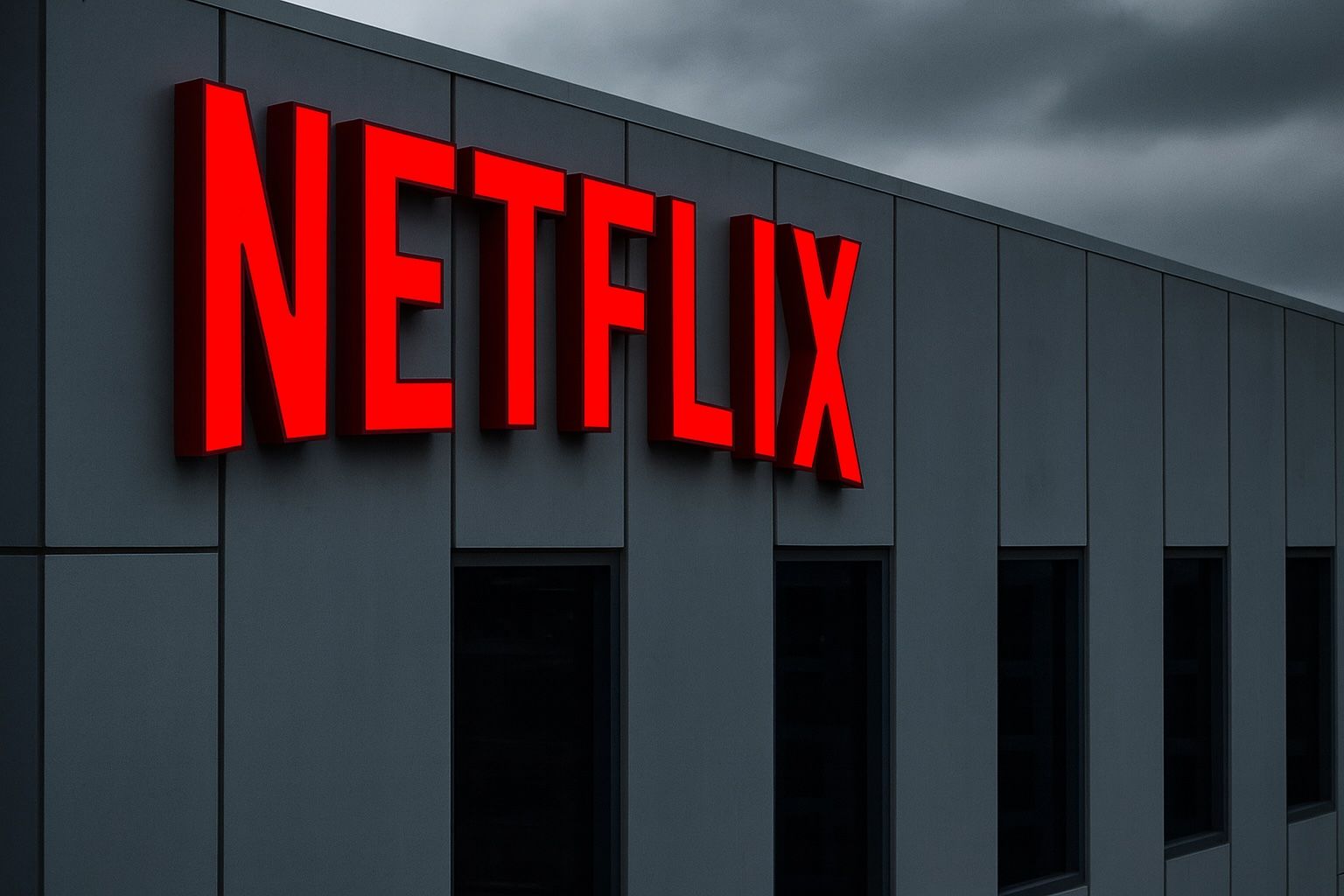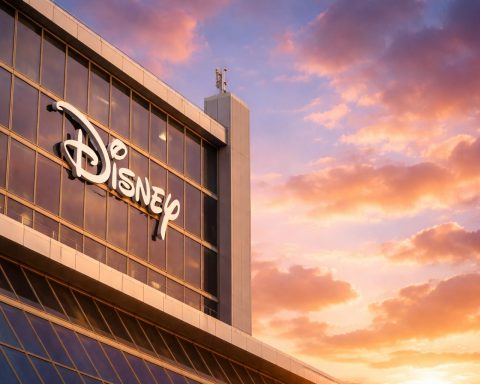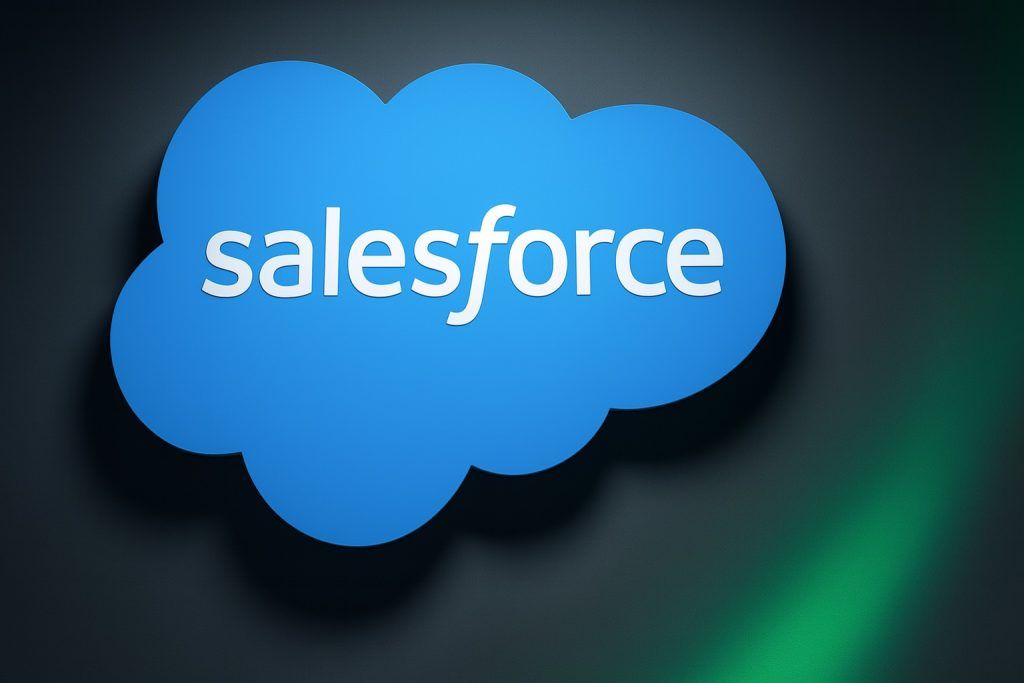What to Know Before Markets Open on October 20, 2025
- Surging Stock: Netflix shares have jumped roughly 70% over the past year, recently trading near $1,200 – just shy of all-time highs [1]. The stock is up about 30% year-to-date in 2025 and sits ~10% below its peak of $1,341 [2]. Investors remain optimistic ahead of Netflix’s Q3 earnings report on October 21, 2025.
- Subscriber Boom: The streaming giant now boasts over 300 million paid subscribers worldwide [3], solidifying its status as the subscriber “king” over rivals Amazon and Disney. A crackdown on password sharing and a new ad-supported tier (launched 2023) have fueled growth – the ad tier alone reaches 94+ million users globally just two years after launch [4].
- New Revenue Streams: Netflix is expanding beyond on-demand shows. In a first, it will stream a live NFL game on Christmas Day 2025, opening doors for sports fans and advertisers [5]. A groundbreaking partnership with brewer AB InBev will tie top Netflix series to beer brands and see AB InBev advertise during Netflix’s live events [6]. “Streaming is a social and shared experience — it’s an occasion where beer and entertainment come together,” said AB InBev’s marketing chief [7], highlighting the synergy.
- Analysts Upbeat (with Caution): Wall Street remains broadly bullish on NFLX. About two-thirds of analysts rate Netflix a “Buy,” and the consensus price target around $1,330 implies ~10–15% upside from current levels [8]. Some bullish forecasts even see a path to a $1 trillion valuation if Netflix pursues big moves like acquiring Warner Bros. Discovery’s content library [9]. However, a few skeptics warn that intense competition from Disney+, Amazon Prime Video, and Apple TV+ – and high expectations baked into a ~45× forward P/E – could limit further stock gains [10] [11].
Stock Near Record Highs as Earnings Loom
Netflix’s stock price has been on a tear in 2025. Shares of the streaming leader have climbed roughly 70% over the past year, recently trading around $1,200 – an all-time high region for the company [12]. The tech-heavy Nasdaq’s overall strength and Netflix’s own performance have propelled the stock to this level. Year-to-date, Netflix is up about 30%, outpacing the broader market. It’s now roughly 10% below its peak of $1,341 per share reached earlier this month [13]. This surge has boosted Netflix’s market capitalization to about $513–518 billion [14] [15], vaulting it into the upper echelon of tech media companies.
Earnings momentum has underpinned the rally. Netflix soundly beat expectations in the last reported quarter (Q2 2025), posting $11.08 billion in revenue (up 15.9% year-on-year) and earnings of $7.19 per share, both slightly above analyst forecasts [16]. The company also reaffirmed its full-year guidance, signaling confidence in its second-half performance [17]. Wall Street expects more strong results in the upcoming Q3 report due on October 21, 2025. Consensus estimates forecast Q3 revenue of about $11.5 billion (+17% YoY) and EPS around $6.9 [18]. If Netflix delivers on these targets (or surprises to the upside), it could further validate the stock’s hefty valuation. Netflix’s forward price-earnings multiple is near 45–50×, a premium reflecting investors’ high growth expectations [19] [20]. Any slip-up in the earnings report or outlook could spur a pullback after the stock’s big run, but a strong report may well send Netflix shares to new highs.
Subscriber Growth and Engagement Trends
A key factor in Netflix’s market optimism is its resurgent subscriber growth. After years of fierce competition, Netflix has reaccelerated its member additions by reinventing parts of its business model. The company’s global paid memberships hit a record ~302 million by late 2024 [21] and have continued climbing in 2025. Analysts estimate Netflix added around 7 million net new subscribers in Q3 2025 [22] [23], driven by strong growth in international markets and the conversion of account-sharers into paid users. Notably, Netflix in 2023 began a strict password-sharing crackdown – prompting many households to finally pay for their own account – and introduced a cheaper ad-supported plan to entice cost-conscious viewers. These moves have paid off: Netflix’s ad-supported tier (“Standard with Ads” at ~$7.99/month) now has over 94 million active viewers globally [24] and accounts for roughly half of new subscriber sign-ups [25]. The company touts the ad tier’s success in attracting price-sensitive customers who might otherwise not subscribe.
Content also remains king for driving engagement. Netflix continues to release buzzy original programming; for example, an animated film “Kpop Demon Hunters” became a breakout hit in Q3, reportedly adding “roughly 500 million viewing hours” in the quarter and now ranked as the most-watched Netflix film ever [26] [27]. This kind of must-see content helps keep subscribers engaged and less likely to churn. Looking ahead, Netflix’s Q4 lineup appears strong – including the highly anticipated final season of Stranger Things and even live sports events (discussed below) – which could sustain subscriber momentum into 2026.
Bold Deals, Live Sports, and New Revenue Streams
Netflix is no longer just a streaming-video company – it’s leveraging its platform and brand to explore new revenue streams and content formats. One of the most eye-catching moves is Netflix’s entry into live sports. This Christmas, Netflix will for the first time broadcast an NFL football game (a special December 25th matchup) on its service [28]. The company has dipped a toe into live content with comedy specials and competition shows, but airing an NFL game marks a significant step into sports broadcasting. To monetize this, Netflix has embraced advertising and sponsorship around live events. In fact, Netflix struck a landmark partnership with brewing giant Anheuser-Busch InBev in September 2025 to jointly promote Netflix content and AB InBev beers [29] [30]. Under the deal, famous beer brands like Budweiser, Stella Artois, and Corona will be featured in co-marketing campaigns tied to Netflix hits (for example, special-edition beer cans themed after popular shows), and AB InBev will advertise during Netflix’s live broadcasts such as the NFL game and an upcoming 2027 Women’s World Cup stream [31] [32]. “Streaming is a social and shared experience — it’s an occasion where beer and entertainment come together,” explained AB InBev’s Global CMO Marcel Marcondes of the win-win collaboration [33]. This unprecedented partnership underscores how Netflix is opening itself to advertising dollars and brand tie-ins that were once the domain of traditional TV networks.
Advertising has quickly become a promising business for Netflix. The company’s ad-supported membership tier (launched in late 2023) has seen rapid uptake, and Netflix’s advertising revenue has more than doubled year-over-year by some estimates [34] [35]. Netflix disclosed that its ad tier reached 94+ million users by late 2025 [36], and executives have called the early ad business a “potential growth engine” for the company [37]. The influx of ad income provides a new lever for Netflix’s top-line growth beyond raising subscription prices. (Notably, Netflix did implement a price increase on its standard plan in early 2025 – U.S. standard no-ads went from $15.49 to $17.99 – to help boost revenue [38]. Future price hikes are possible but will be balanced against retention concerns.)
Beyond ads and sports, Netflix is also doubling down on gaming and immersive experiences as long-term growth bets. Co-CEO Greg Peters recently reiterated that Netflix will “ramp up” investment in gaming content [39]. The company has reorganized its nascent gaming division to focus on four pillars (casual party games, kids’ games, narrative story-driven games, and mainstream licensed titles) and has started integrating games into the Netflix app. Some early experiments have shown promise – Netflix licensed the blockbuster Grand Theft Auto franchise for a streaming game and launched original games like Squid Game: Unleashed. “We’ve seen good progress … and you’ll see more from us in both of those categories,” Peters said, referring to licensed games and Netflix-developed games [40]. However, he acknowledged that current usage is tiny (fewer than 1% of Netflix subscribers played its games in 2023) and that the company will be “disciplined” in its gaming spend until there’s a clearer payoff [41]. Still, with the global video game market exceeding $100 billion, Netflix sees even a small foothold in gaming as a valuable opportunity.
In an effort to extend its franchises beyond the screen, Netflix is also experimenting with real-world attractions. The company announced plans to open “Netflix House” venues – large, immersive entertainment centers – in major cities. Two flagship Netflix House locations (each over 100,000 square feet) are slated to open in late 2025 in Los Angeles and Dallas, featuring features like VR experiences, themed restaurants (e.g. a “Netflix Bites” eatery), mini-golf courses, and merch stores all based on Netflix’s hit shows like Stranger Things and Squid Game [42]. A third location in Las Vegas is expected in 2027 [43]. These forays into live events and location-based entertainment aim to deepen fan engagement and create new income streams from Netflix’s popular intellectual property – essentially, turning binge-worthy TV universes into theme-park-style destinations. It’s another example of Netflix’s evolving strategy to grow beyond the core streaming subscription model.
Wall Street’s Take: M&A Chatter and Price Targets
With Netflix’s core business humming, Wall Street analysts have been actively debating the company’s next strategic moves and how much upside is left in the stock. Overall, sentiment remains positive. According to MarketBeat and Zacks data, roughly 65–70% of analysts covering NFLX rate it a “Buy” or equivalent, with the rest mostly Holds and only a few Sells [44] [45]. The consensus 12-month price target now sits around $1,330–$1,338 per share, about 10% above the current price [46] [47]. Some bulls are far more aggressive: for instance, one Wall Street high target is $1,600 [48], implying 30%+ upside and a belief that Netflix’s growth runway is nowhere near finished. On the conservative side, a few analysts see Netflix as fully valued – the lowest targets around $800 reflect concerns that subscriber saturation and competition could eventually slow growth [49]. For now, the “moderate Buy” consensus underscores that most experts think Netflix will continue to outperform its streaming peers.
One hot topic among analysts is the possibility of major acquisitions to boost Netflix’s content arsenal. In particular, there has been market chatter about Netflix potentially acquiring Warner Bros. Discovery’s entertainment assets (which include the HBO Max streaming service and Warner’s vast film/TV library). This speculation ramped up after reports that Warner Bros. Discovery (WBD) might spin off certain divisions in 2026. Wells Fargo analysts recently argued Netflix would be the “most compelling” bidder if WBD sells its studio and streaming arm. They estimate Netflix could gain WBD’s $12 billion annual content budget, a $6.5 billion content library (rich with DC Comics, HBO hits, Harry Potter, etc.), plus physical studio infrastructure [50]. Wells Fargo’s “blue-sky” math suggests such a deal could boost Netflix’s earnings by ~18% by 2030 and even “push Netflix toward a $1 trillion market cap” in the long run [51]. That tantalizing scenario is part of why some bulls see enormous upside ahead.
However, not everyone agrees that buying a legacy media rival is wise for Netflix. Bernstein analyst Laurent Yoon is notably skeptical of a WBD takeover. He notes the media industry’s history of ill-fated mega-mergers – “the industry is no stranger to head-scratching deals,” Yoon quipped, pointing to past combinations like AT&T-TimeWarner that failed to create promised value [52]. Yoon doubts that adding another huge slate of general-entertainment content would yield sustained growth for Netflix. Warner’s franchises might give a short-term engagement bump, but at a high cost. He flatly called WBD “not a compelling acquisition” for Netflix’s strategy [53]. So far, Netflix’s management also sounds lukewarm on big M&A; co-CEO Ted Sarandos has in the past expressed caution about large studio acquisitions, emphasizing Netflix’s focus on organic content creation [54]. In sum, while a blockbuster takeover could happen (Netflix’s hefty free cash flow and rising stock make it feasible), many observers believe Netflix will only pull the trigger if the strategic fit is undeniable.
Even without M&A, analysts see plenty of growth avenues for Netflix. Evercore ISI recently reiterated its “Outperform” rating with a ~$1,375 price target, citing Netflix’s solid financials and the potential of its newer ventures (advertising, gaming, etc.) [55] [56]. Conversely, Goldman Sachs has urged a bit of caution – in late September, Goldman trimmed its NFLX target to $1,300, voicing concern that competitors might ramp up spending and eat into Netflix’s lead [57]. Indeed, intensifying competition was the most common risk factor mentioned in recent analyst notes. Yet even Goldman’s $1,300 target implies Netflix can continue growing earnings at a healthy clip to justify that valuation. The company’s fundamentals appear strong: Netflix is on pace for roughly $45 billion in revenue in 2025 and analysts forecast over $24–25 in EPS for the full year [58], which would be more than 30% year-over-year earnings growth [59]. Additionally, Netflix is generating robust free cash flow (projected around $9+ billion in 2025 per some estimates [60]), giving it flexibility to invest in content and new projects without jeopardizing profitability. All told, Wall Street’s base case is that Netflix’s best days aren’t behind it – but the company will have to execute well to meet the market’s lofty expectations.
Streaming Wars: Netflix vs. Disney+, Amazon, and Apple
Even as Netflix diversifies, it faces a crowded streaming landscape where deep-pocketed rivals are vying for viewers’ attention (and subscription dollars). Disney+, Amazon Prime Video, and Apple TV+ are three of Netflix’s biggest competitors, each with different strengths:
- Disney+ – The service built on Disney’s unmatched content IP (Marvel, Star Wars, Pixar, etc.) enjoyed explosive growth after its 2019 launch but has recently hit turbulence. Disney+ climbed to about 164 million global subscribers by 2022, then slipped to ~158 million by the end of 2024 [61] as it refocused on profitability over pure user growth. Under returning CEO Bob Iger, Disney has implemented price hikes and introduced an ad-supported tier for Disney+ [62]. Disney is also bundling content from Hulu and ESPN+ to make a more comprehensive app. While Disney+ can’t match Netflix’s overall scale (roughly half the subscribers), it remains a formidable rival – especially for family content and franchise blockbusters. Analysts note that Disney’s push for streaming profitability could mean less aggressive spending on new content, but the company’s iconic brands ensure Disney+ will continue to be a must-have for many households.
- Amazon Prime Video – Amazon’s streaming offering is unique since it’s bundled as a perk with Amazon Prime (which has over 200 million members globally) [63]. Prime Video doesn’t release standalone subscriber figures, but it effectively reaches hundreds of millions of users who have Prime. Amazon has shown it’s willing to spend heavily to compete: it paid an estimated $250M just for the rights to produce The Lord of the Rings: The Rings of Power, one of the most expensive series ever [64], and it acquired MGM Studios in 2022 to bulk up its library [65]. Amazon is also all-in on live sports – notably, it secured exclusive rights to NFL Thursday Night Football in the US through 2033, drawing around 10 million weekly viewers to Prime Video [66]. In 2024, Amazon announced it will start including ads on Prime Video for all users (with an option to pay ~$2.99/month extra for ad-free) [67], underscoring that it sees streaming as a meaningful standalone business, not just a customer perk. Prime Video’s breadth of content (original shows, licensed movies, sports, and even add-on subscription channels) makes it a robust competitor. However, because Prime Video is tied to Amazon’s ecosystem, its success is not solely judged on streaming subscriber counts – Amazon cares about Prime keeping customers loyal to its retail platform. For Netflix, Amazon’s massive resources and different business model mean it faces a competitor that isn’t afraid to operate on razor-thin margins.
- Apple TV+ – Apple’s streaming service (launched in late 2019) is smaller in scale but backed by the world’s largest company. Apple TV+ has an estimated 45+ million paying subscribers as of 2025 [68] (and tens of millions more on free trials or bundles), a fraction of Netflix’s base. Rather than volume of content, Apple has focused on quality over quantity, investing in prestigious originals (Ted Lasso, The Morning Show, Severance) and big-budget films. That strategy has earned critical acclaim – Apple TV+ even won an Oscar for CODA – but it means Apple’s content library is much thinner than Netflix’s. Apple has been ramping up its content spend and, like Amazon, is delving into sports: it holds exclusive streaming rights to Major League Soccer globally and offers weekly MLB baseball games. Unlike Netflix and Disney, Apple TV+ has not introduced an ad-supported tier yet (Apple makes plenty from hardware and App Store revenue), though it has begun exploring advertising by inserting sponsor messages during its sports streams. Apple’s advantage is its huge device ecosystem and the ability to bundle Apple TV+ with other services (via Apple One). Every iPhone or iPad sold is a potential gateway to Apple TV+. For now, Apple TV+ remains a smaller player in subscriber count, but its rapid growth – an 8% U.S. market share in Q1 2025, up from 7% the prior quarter [69] – shows it is steadily gaining ground. Netflix can’t ignore the competitive threat if Apple were to significantly ramp up investment or distribution for streaming.
Netflix still leads the streaming pack in total subscribers and global reach (available in 190+ countries versus ~150 for Disney+ and ~200 for Prime Video) [70] [71]. It also has a head start in the streaming content game, with a vast library of originals built over the past decade. But the “streaming wars” have evolved into a high-stakes battle where all major players are adopting similar tactics – from launching ad-supported plans to investing in local-language content and franchises. This competitive backdrop means Netflix must continuously innovate to retain its edge. Every subscriber has finite time and a finite budget, and rivals are angling to steal screen time from Netflix. Notably, Max (HBO), Peacock, Paramount+, and others further crowd the field, especially in the U.S., though many are now pivoting to narrower strategies or partnerships (for example, Warner’s Max embracing more Discovery reality content, or Paramount considering integrating Showtime). In the face of such competition, Netflix’s scale is a huge advantage – but the company will need to keep producing big hits and offering value to prevent churn as alternatives abound.
Outlook: Can Netflix Keep the Momentum?
As of October 2025, Netflix finds itself in an enviable but challenging position. The company is firing on all cylinders – subscriber count at record highs, revenue and earnings growing double-digits, and new ventures opening fresh growth opportunities. This has translated into a soaring stock price and optimistic forecasts. Analysts on average expect Netflix’s earnings per share to jump ~31% in 2025 and another ~23% in 2026 [72], impressive growth for a company of its size. If those projections hold, Netflix’s bottom line would reach roughly $32 per share in two years, reinforcing the idea that today’s rich valuation might be justified by tomorrow’s profits. Moreover, Netflix’s strong balance sheet and cash generation mean it can fund content spending (around $17–18 billion this year) and strategic projects like games or potential acquisitions without needing external financing [73]. In an industry where some competitors are burning cash, Netflix’s financial discipline (it even improved operating margins during its password-sharing crackdown) is a significant strength.
That said, risks and unknowns loom on the horizon. The most immediate test is the upcoming Q3 earnings release on Oct. 21, which will show whether Netflix’s subscriber gains and revenue growth are meeting the high bar it has set. Any slowdown in new subscriber additions or weaker-than-expected guidance for Q4 could raise questions about saturation in key markets. Netflix has already raised prices in many regions – how much pricing power remains before consumers push back? The company must also execute on its new initiatives. Early success in advertising and live content is promising, but Netflix is still building credibility with advertisers and figuring out the logistics of live streaming at scale. Similarly, the move into gaming and merchandise/experiences will take time to meaningfully contribute to revenue. These efforts carry execution risk, and there’s no guarantee they will be home runs.
Another overhang is regulation and content licensing. As Netflix’s cultural influence grows, it’s increasingly under the microscope of regulators abroad. For example, just recently Turkey’s media watchdog fined Netflix for streaming content deemed contrary to “family values,” ordering certain films removed from the Turkish catalog [74]. Such censorship or regulatory hurdles in international markets could complicate Netflix’s global expansion or force it to alter content. Additionally, even though Netflix produces vast amounts of original content, it still licenses popular shows and movies from traditional studios. Changes in studio alliances – say, if a major partner pulls content to boost its own platform – could impact Netflix’s offerings. The company’s long-term strategy of developing its own IP (and possibly acquiring IP via deals like a hypothetical WBD purchase) is partly to mitigate this reliance on others’ libraries.
Competition remains the perennial challenge. As discussed, Disney, Amazon, Apple and others are not sitting idle. In fact, some rivals are copying Netflix’s playbook (Disney is expected to crack down on password sharing in 2025, for instance, just as Netflix did) and others are leveraging strengths Netflix doesn’t have (Amazon tying streaming to shopping perks, Apple bundling services). Goldman Sachs cautioned that the “streaming content arms race” could squeeze Netflix if competitors up their spending [75]. So far, Netflix has managed to stay ahead through sheer scale and savvy execution – but the race is marathon, not a sprint.
In the near term, most analysts and investors appear confident that Netflix will continue to deliver. “Netflix’s record-breaking content and strategic expansions position it for a strong finish to 2025,” wrote one entertainment analyst, noting the company’s widening array of growth drivers [76]. As long as Netflix keeps its subscribers engaged (the average Netflix user already watches about an hour a day) and finds new ways to monetize that engagement, it should retain its streaming crown. The company’s leadership frequently emphasizes “creating value for our members” as the North Star [77] – meaning if Netflix can keep audiences happy with great content and features, the business results will follow.
Bottom line: Netflix enters late 2025 on a high note, with Wall Street and viewers alike eagerly anticipating what’s next. The stock’s dramatic climb reflects the company’s successful pivot from a pure streaming service to a multifaceted entertainment platform. The coming quarters – including next week’s earnings report – will be crucial in determining if Netflix can sustain its growth trajectory. If it can continue executing on new initiatives (ads, live events, games) while churning out must-see TV and films, Netflix may well script another strong chapter in its story. But if the streaming giant stumbles or the competition catches up faster than expected, investors could reconsider the lofty valuation. For now, Netflix remains the star of the streaming show, striving to stay one step ahead in an ever-evolving media industry.
Sources: Latest earnings and subscriber metrics, analyst commentary from brokerage reports, and news on Netflix’s partnerships and strategy [78] [79] [80] [81], as well as context on the streaming industry from Reuters and tech media [82] [83]. All information is up-to-date as of October 19, 2025.
References
1. ts2.tech, 2. www.nasdaq.com, 3. www.nasdaq.com, 4. www.reuters.com, 5. www.reuters.com, 6. www.reuters.com, 7. www.reuters.com, 8. ts2.tech, 9. ts2.tech, 10. ts2.tech, 11. ts2.tech, 12. ts2.tech, 13. www.nasdaq.com, 14. ts2.tech, 15. ts2.tech, 16. ts2.tech, 17. ts2.tech, 18. www.nasdaq.com, 19. www.nasdaq.com, 20. ts2.tech, 21. ts2.tech, 22. inews.zoombangla.com, 23. inews.zoombangla.com, 24. www.reuters.com, 25. www.nasdaq.com, 26. inews.zoombangla.com, 27. inews.zoombangla.com, 28. www.reuters.com, 29. www.reuters.com, 30. www.reuters.com, 31. www.reuters.com, 32. www.reuters.com, 33. www.reuters.com, 34. www.nasdaq.com, 35. www.nasdaq.com, 36. www.reuters.com, 37. www.reuters.com, 38. ts2.tech, 39. ts2.tech, 40. ts2.tech, 41. ts2.tech, 42. ts2.tech, 43. ts2.tech, 44. ts2.tech, 45. ts2.tech, 46. ts2.tech, 47. www.nasdaq.com, 48. www.nasdaq.com, 49. www.nasdaq.com, 50. ts2.tech, 51. ts2.tech, 52. ts2.tech, 53. ts2.tech, 54. inews.zoombangla.com, 55. ts2.tech, 56. ts2.tech, 57. ts2.tech, 58. ts2.tech, 59. www.nasdaq.com, 60. www.morningstar.com, 61. ts2.tech, 62. ts2.tech, 63. ts2.tech, 64. ts2.tech, 65. ts2.tech, 66. ts2.tech, 67. ts2.tech, 68. en.wikipedia.org, 69. 9to5mac.com, 70. ts2.tech, 71. ts2.tech, 72. www.nasdaq.com, 73. www.morningstar.com, 74. ts2.tech, 75. ts2.tech, 76. inews.zoombangla.com, 77. ts2.tech, 78. ts2.tech, 79. ts2.tech, 80. www.reuters.com, 81. ts2.tech, 82. www.reuters.com, 83. ts2.tech







